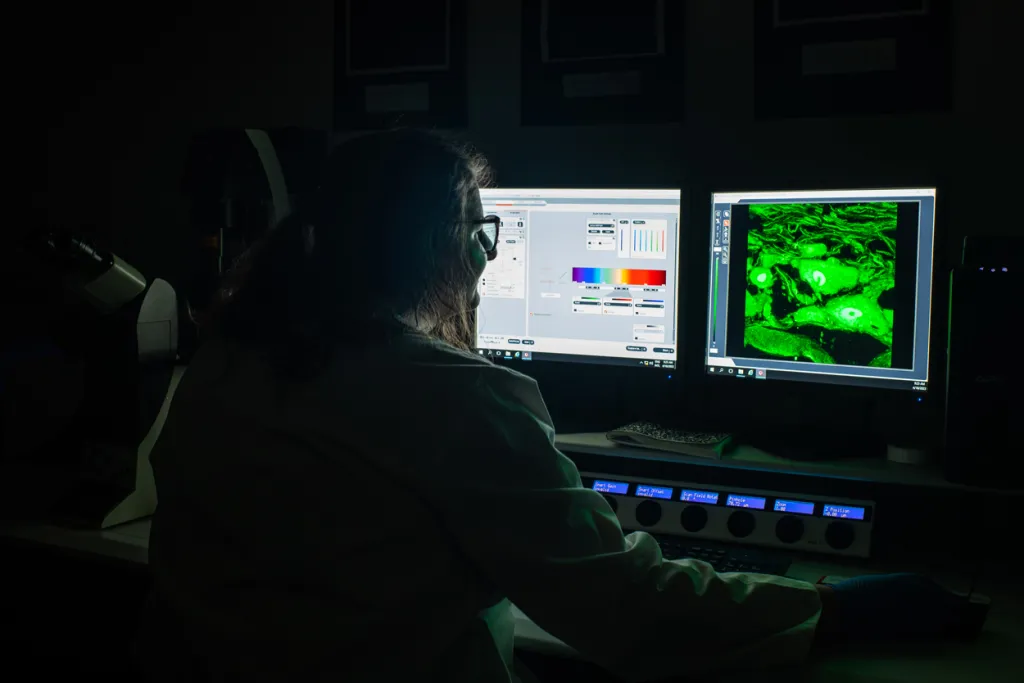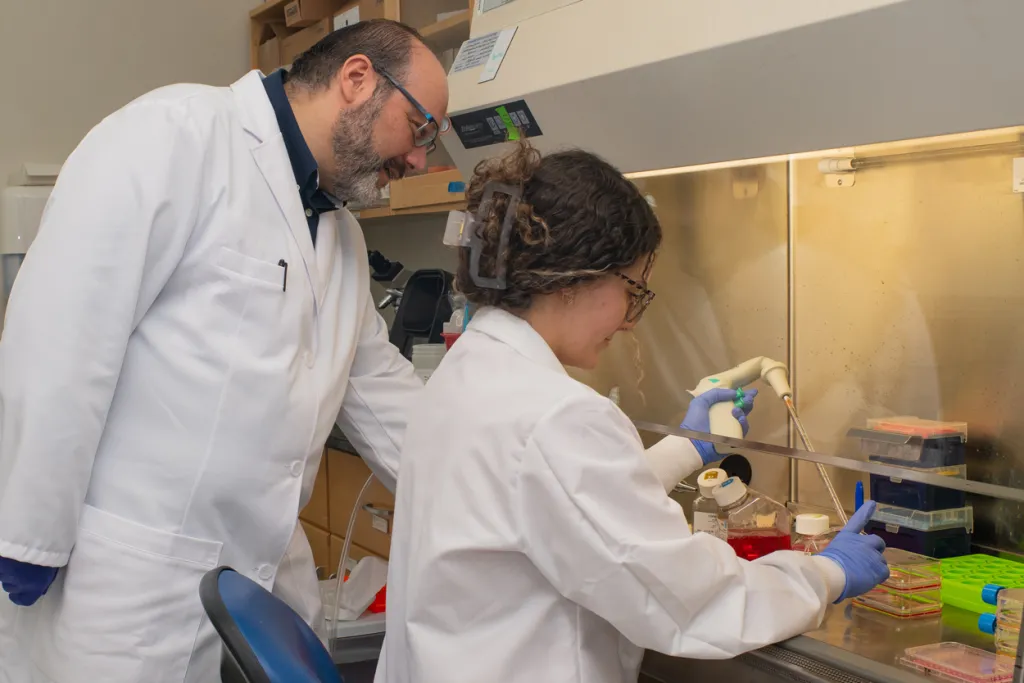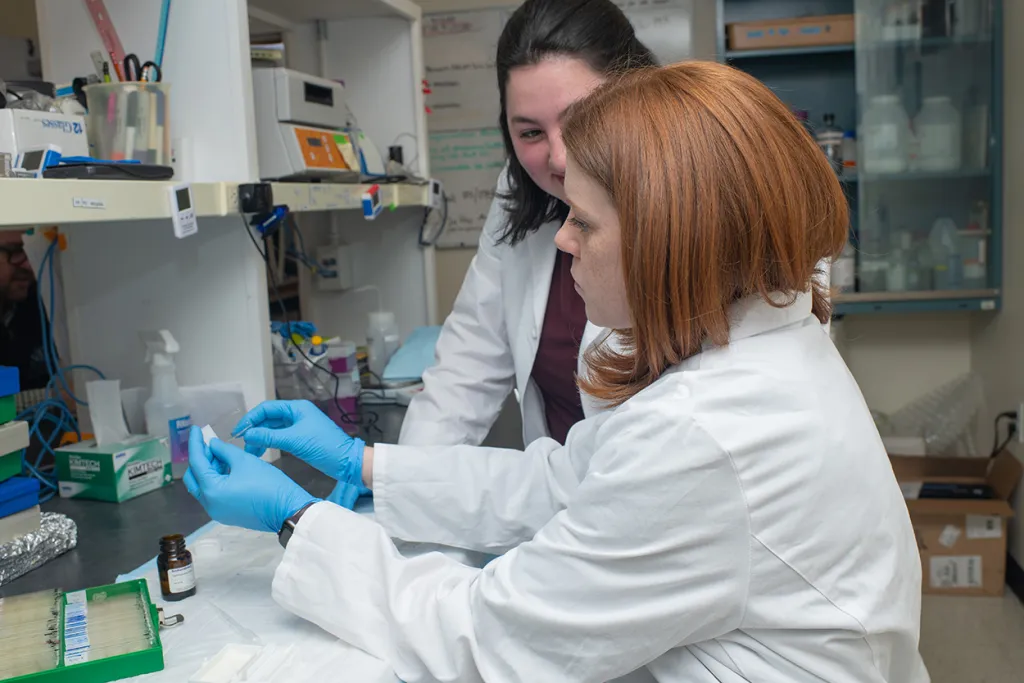About our services
The Behavior Core offers a variety of models and measures commonly used in the research setting including general behavioral phenotyping, neurobehavioral tests, and in vivo drug screening.
Request Services
Work and training service requests are made via iLab.
Complete a work or training request
View instructions on setting up an iLab account (PDF)
If there is a model or measure you are interested in but don’t see here email us at behaviorcore@une.edu.

Models
The core offers cutting edge, validated and well characterized models commonly used in basic science research. These models are used to gain mechanistic insights to clinically relevant questions and for in vivo screening in drug development.
- Nociception (Acute and chronic models)
- Learning and Memory
- Neurocognitive Functioning
- Anxiety and Depression
- Addiction
- Pharmacokinetic Dosing and Collection
Measures
Assays commonly used as behavioral readouts for basic science research.
Evoked/Acute Pain Measures
- von Frey Test (punctate tactile hypersensitivity)
A non-noxious punctate tactile stimulus is applied to the desired test area. The threshold to evoke a withdrawal response is quantified. - Brush Test (dynamic tactile hypersensitivity)
A non-noxious dynamic brushing tactile stimulus is applied to the desired test area. The evoked reaction is rated. - Randall Selitto Test (pressure hypersensitivity)
A blunt pressure stimulus is applied to the test area. The threshold to evoke a response is quantified. - Pincher Test (pressure hypersensitivity)
A blunt pressure stimulus is applied to the test area. The threshold to evoke a response is quantified. - Pressure Application Management (P.A.M.) (joint hypersensitivity)
A blunt pressure stimulus is applied to the test area. The threshold to evoke a response is quantified. - Static Weight Bearing (joint hypersensitivity)
Measurement of shifts in weight between the hindlimbs. - Hargreaves Test (heat hypersensitivity)
A heat stimulus is applied to the test area through a glass plate. The latency to evoke a withdrawal response is quantified. - Tail-flick Test (heat hypersensitivity)
The test area is immersed in the pre-heated bath. The latency to evoke a withdrawal response is quantified. - Dry Ice Test (cold hypersensitivity)
Dry ice is applied to the test area through a glass plate. The latency to evoke a withdrawal response is quantified. - Hot/Cold Plate (thermal hypersensitivity)
A hot or cold plate used to measure changes in thermal sensitivity. Subjects are placed on the pre-heated or pre-cooled metal plate and the latency to evoke a response is measured. - Grip Strength
This test can be used to measure forepaw and/or hindpaw muscular strength, as well as hypersensitivity to axial stretch.
Motivation/Cognitive Measures
- Conditioned Place Preference (CPP)
This test is used to measure the motivational effects of reinforcing experiences. - Addiction potential
Drugs that are rewarding (e.g. cocaine, heroin) produce conditioned place preference for a novel context - Antinociceptive potential
Drugs that alleviate persistent pain (e.g. neuropathic pain) produce conditioned place preference for a novel context - Conditioned Place Avoidance (CPA)
This is used to measure the motivational effects of aversive experience: - Drugs or experiences that are aversive (e.g. loud noise, noxious events) produce conditioned place aversion for a novel context.
- Conflict Avoidance Measure (Coy Mechanical Conflict-Avoidance System)
Used to assess diminished motivation to cross a textured floor to a preferred dark space. - Thermal Place Preference (warm or cold)
This is used to measure inclination to explore a surface that is hot or cold compared to a room temperature surface. - Open-field Test
This test is used to assess spontaneous locomotor activity and rearing. Time spent in margins versus the center of the open field is used as a measure of anxiety. - Measures to determine antidepressant-like states for assessment of novel antidepressant drugs are available upon request (e.g. Swim Test).
- Measures to determine anxiety-like states for assessment of novel anxiolytic drugs are available upon request (e.g. EPM).
- Measures to determine learning and memory are available upon request (e.g. novel object recognition, T-maze, Morris Water Maze).
Additional Measures
- Rotorod Test
This is a test of motor coordination and balance. - GI Transit (charcoal) Test
This is a measure of the level of gastrointestinal inhibition of opioid-like compounds in drug development screening. - Tolerance/Dependence
Measure the level of tolerance and/or dependence that develops after chronic use of opioid-like compounds in drug development screening.
Surgical Models
- Post-operative pain
- Plantar Incision (mouse/rat)
- Neuropathic pain
- Sciatic Nerve Crush (mouse/rat)
- Spared Nerve Injury (mouse/rat)
- Infraorbital chronic constriction injury (rat)
- Osteoarthritis
- Partial meniscectomy PMX
Additional Services
- We offer handling and compound administration options to assist in all aspects of drug screening, model development and study implementation.
- The core is accomplished in perfusions and tissue collection methods.
- Our staff is trained to preform pharmacokinetic (PK) dosing experiments.
- We offer consultation services for grant submissions, UNE Institutional Animal Care and Use Committee (IACUC) protocol submissions, and study design.


Training
We are available to conduct trainings on any of our services or equipment, to faculty, staff, and students.
Students and staff are welcome to complete UNE’s Rodent Behavior Skills badge to display on their transcript and/or resume. Visit our Credly badge site to learn more
Quality Control
Our staff have more than 17 years of combined experience with behavior testing in a research environment. All experimental procedures will obtain prior approval by the IACUC and will be conducted in compliance with the NIH Guide for the Care and Use of Laboratory Animals.
